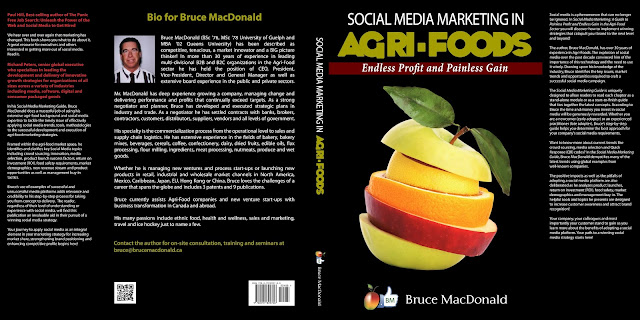What’s Bleach Doing in My Fruit?
Posted in Blog, Apple, Banana, Cancer, Coffee, Chemicals, Fruits / Vegetables, Fruit, Vegetable, Food Chemistry, Food Safety, Food Additive, Healthy, Spices, Seasonings / Spices
I’m convinced science literacy in the United states is at least partly responsible for the high level of misunderstanding of food and nutrition science and the rampant chemophobia that colors the public’s thinking. According to the National Math + Science Initiative:
- U.S. students recently ranked 17th in science in the world compared to 31 other countries.
- The World Economic Forum ranks the United States as No. 48 in quality of math and science education.
-Lynn A. Kuntz
What’s Bleach Doing in My Fruit?
Last month, I came across a blog post at Prevention magazine titled “What’s Anti-Freeze Doing in Fast Food?", based on a blog post titled “6 Cosmetic Chemicals in Fast Food." The intent is to frighten people away from fast food by pointing out some scary sounding chemicals used in food production and preservation, like propylene glycol and sodium stearoyl lactylate, that happen to be used in cosmetic products as well.
So, to show how irrational this is, I submit a rebuttal in similar format using “natural" chemicals in foods with no argument over their healthiness: fruits and vegetables. Interestingly, though I didn't originally intend it, all of these are found in cosmetic products, showing just how easy it is to find overlap.
Formaldehyde
- Found in beets, cauliflower, grapes, bananas, apples (likely measurable to some degree in all foods) (source).
- Used to preserve human remains and as a fungicide (source).
- Classified as “known to be a human carcinogen" by the World Health Organization’s International Agency for Research on Cancer (IARC) (source).
- Also used in shampoos and other cosmetics (source).
- Found in apples, pears, tomatoes, coffee (sources a, b, c, d, e, f).
- Used as rocket fuel, in explosives, and as a bleaching agent (source).
- Known mutagen (source).
- Also used in teeth whiteners, mouthwash and other cosmetics (source).
- Found in bananas, oranges, apples, carrots, cucumbers, onions (source).
- Used in fuel mixtures and glues (source).
- Classified as “possibly carcinogenic to humans" by the IARC, causes cancer in animals (source).
- Also used as a fragrance in shampoos and other cosmetics (source).
- Found in cranberries, grapefruit, celery, onions (source).
- Used to kill weeds and as an extraction solvent (source).
- Causes cancer in animals (source).
- Also used in cosmetics (source).
- Found in carrots, nutmeg (source).
- Hallucinogen (source).
- Causes organ damage in animals (source).
- Also used in cosmetics as a fragrance (source).
- Found in apples (source).
- Present in tobacco smoke (source).
- Causes cancer in animals (source).
- Also used in perfumes, soaps and other cosmetics as a fragrance (source).
Scaring people toward “real food" by exploiting the fear of chemicals is disingenuous and does a disservice to public understanding of risk perception and chemistry. The promotion of healthy dietary patterns should be done using science-based information.
Colby Vorland is a nutritional science graduate student. He blogs about various research topics in nutrition at http://www.nutsci.org and is on Twitter @nutsci .
Check out my latest e-book entitled: "Social Media Marketing in Agri-Foods: Endless Profit and Painless Gain".
The book is available on Amazon and Kindle for $4.99 USD. Visit amazon/Kindle to order now:
http://www.amazon.ca/Social-Media-Marketing-Agri-Foods-ebook/dp/B00C42OB3E/ref=sr_1_1?s=digital-text&ie=UTF8&qid=1364756966&sr=1-1
Written by Bruce MacDonald, a 30 year veteran of the Agri-food industry, in "Social Media Marketing in Agri-Foods: Endless Profit and Painless Gain", Bruce applies his background and expertise in Agri-foods and social media to the latest trends, tools and methodologies needed to craft a successful on-line campaign. While the book focuses on the Agri-food market specifically, I believe that many of the points Bruce makes are equally applicable to most other industries.


No comments:
Post a Comment